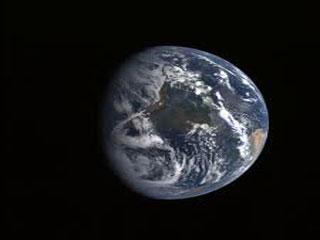
A file photo.
LONDON (PTI): Scientists claim to have discovered a potentially habitable planet which has an environment much similar to that of Earth and may contain water and even life.
The exoplanet, called Gliese 581g, is located around 123 trillion miles away from Earth and orbits a star at a distance that places it squarely in the habitable or the Goldilocks zone, the scientists said.
The research, published in a paper published in the Astrophysical Journal, suggests that the planet could contain liquid water on its surface, meaning it tops the league of planets and moons rated as being most like Earth, they said.
"Our findings offer a very compelling case for a potentially habitable planet said Vogt," said lead researcher Steven Vogt, a professor of astronomy and astrophysics at the University of California Santa Cruz.
"The fact that we were able to detect this planet so quickly and so nearby tells us that planets like this must be really common," Prof Vogt was quoted as saying by Daily Mail.
The new findings are based on 11 years of observations of the nearby red dwarf star Gliese 581 using the HIRES spectrometer on the Keck I Telescope by a team from UC Santa Cruz and the Carnegie Institution of Washington.
The team reported the discovery of two new planets around Gliese 581. This brings the total number of known planets around this star to six, the most yet discovered in a planetary system outside of our own.
Like our solar system, the planets around Gliese 581 have nearly-circular orbits, the team said.
It found that Gliese 581g has a mass three to four time the Earth's and orbits its star in just under 37 days.
Its mass indicates that it is probably a rocky planet with a definite surface and enough gravity to hold on to an atmosphere, they said.
Gliese 581 has two previously detected planets that lie at the edges of the habitable zone where the atmosphere is just the right temperature for liquid water to exist -- one on the hot side, the other on the cold face, the scientists said.
While some astronomers still think "planet d" may be habitable if it has a thick atmosphere, others are sceptical.
The newly-discovered planet g, however, lies right in the middle of the habitable zone, they said.
The planet is tidally locked to the star, meaning that one side is always facing the star and basking in perpetual daylight, while the side facing away from the star is in perpetual darkness.
One effect of this is to stabilise the planet's surface climates, according to Vogt. The most habitable zone on the planet's surface would be the line between shadow and light (known as the 'terminator').
It comes as scientists make a case for expanding the habitability zone of a planet to include a larger set of criteria so as not to exclude other likelihood of alien life.
Experts report that there are already over 700 exoplanets discovered, but only a few are in the habitable zone.
According to The International Business Times, scientists are saying that limiting the search for extraterrestrial life in Earth-like planets could exclude other possibilities of alien life.
 Previous Article
Previous Article













The Indian Air Force, in its flight trials evaluation report submitted before the Defence Ministry l..
view articleAn insight into the Medium Multi-Role Combat Aircraft competition...
view articleSky enthusiasts can now spot the International Space Station (ISS) commanded by Indian-American astr..
view article